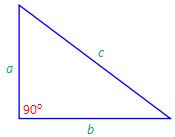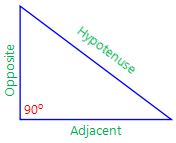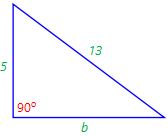When a triangle has a right angle (90°) and squares are made on each of the 3 sides, then the biggest square has the exact same area as the other 2 squares put together!
Pythagoras Theorem can be written in one short equation:
a2 + b2 = c2
Where:
- c is the longest side of the triangle
- a and b are the other 2 sides

Table of Contents
Definition
The longest side of the triangle is called the “hypotenuse”, so the formal definition is:

In a right angled triangle:
The square of the hypotenuse is equal to the sum of the squares of the other 2 sides.
Is This Useful?
If we know the lengths of 2 sides of a right angled triangle, we can find the length of the third side.
It only works on right angled triangles!
How Do I Use it?
Write it down as an equation
Example
Find b!

a2 + b2 = c2
b2 = c2 – a2
b2 = 132 – 52
b2 = 169 – 25
b2 = 144
b = 12
